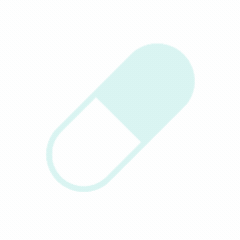Drug updated on 7/31/2025
| Dosage Form | Powder (oral; 250 mg, 1,000 mg) |
| Drug Class | Phenylalanine hydroxylase activators |
| Ongoing and Completed Studies | ClinicalTrials.gov |
Indication
- Indicated for the treatment of hyperphenylalaninemia (HPA) in adult and pediatric patients 1 month of age and older with sepiapterin-responsive phenylketonuria (PKU).
- SEPHIENCE is to be used in conjunction with a phenylalanine (Phe)-restricted diet.
Latest News

Summary
- This summary is based on the review of one randomized controlled trial. [1]
- Sephience (sepiapterin) is indicated for the treatment of hyperphenylalaninemia (HPA) in adult and pediatric patients 1 month of age and older with sepiapterin-responsive phenylketonuria (PKU). SEPHIENCE is to be used in conjunction with a phenylalanine (Phe)-restricted diet.
- In participants of all ages with PKU and blood Phe concentration ≥360 μmol/L, the sepiapterin group showed a -63% (standard deviation [SD] 20) reduction in blood Phe concentration after 6 weeks, compared to a 1% (SD 29) change in the placebo group. The least squares mean change in blood Phe concentration was -395.9 μmol/L (SE 33.8) in favor of sepiapterin versus placebo, with a p-value <0.0001. No effectiveness outcomes were reported for specific subgroups within the study population.
- Among participants with PKU, treatment-emergent adverse events were reported in 59% (33/56) of those receiving sepiapterin and 33% (18/54) of those receiving placebo; mild gastrointestinal events occurred in 20% (11/56) of the sepiapterin group and 19% (10/54) of the placebo group. No deaths, serious, or severe adverse events were reported in either the sepiapterin or placebo groups.
- There is no population types or subgroups information available in the reviewed studies.
Product Monograph / Prescribing Information
| Document Title | Year | Source |
|---|---|---|
| Sephience (sepiapterin) Prescribing Information | 2025 | PTC Therapeutics, Inc., Warren, NJ |
Randomized Controlled Trials
| Document Title | Sex Distribution | Year | Source |
|---|---|---|---|
| Effects of oral sepiapterin on blood Phe concentration in a broad range of patients with phenylketonuria (APHENITY): results of an international, phase 3, randomised, double-blind, placebo-controlled trial | 157Subjects F: 46% M: 54% | 2024 | The Lancet |
Sex Distribution:
F:46%
M:54%
157Subjects
Year:
2024
Source:The Lancet
Clinical Practice Guidelines
| Document Title | Year | Source |
|---|---|---|
| Phenylalanine hydroxylase deficiency diagnosis and management: A 2023 evidence-based clinical guideline of the American College of Medical Genetics and Genomics (ACMG) | 2025 | Genetics in Medicine |

